MRI Inversion Time (TI)
In Magnetic Resonance Imaging (MRI), inversion time (TI) is a specific parameter in inversion recovery pulse sequences. It represents the time interval between the application of a 180-degree inversion pulse, which flips the longitudinal magnetization into the opposite direction, and the subsequent 90-degree excitation pulse, which flips the magnetization into the transverse plane to create the MR signal.
Physics behind Inversion Time (TI) in MRI
Inversion Pulse (180-degree pulse): Initially, a 180-degree inversion pulse is applied to flip the longitudinal magnetization from its resting state (M0) to the opposite direction.
Inversion Time (TI): After the inversion pulse, there is a waiting period known as the inversion time (TI), during which the longitudinal magnetization recovers towards its initial value. The rate at which this recovery occurs is determined by the tissue’s T1 relaxation time.
Excitation Pulse (90-degree pulse): Once the inversion time has passed, a 90-degree excitation pulse is administered. This pulse converts the longitudinal magnetization to transverse magnetization, which is then measured to generate the image.
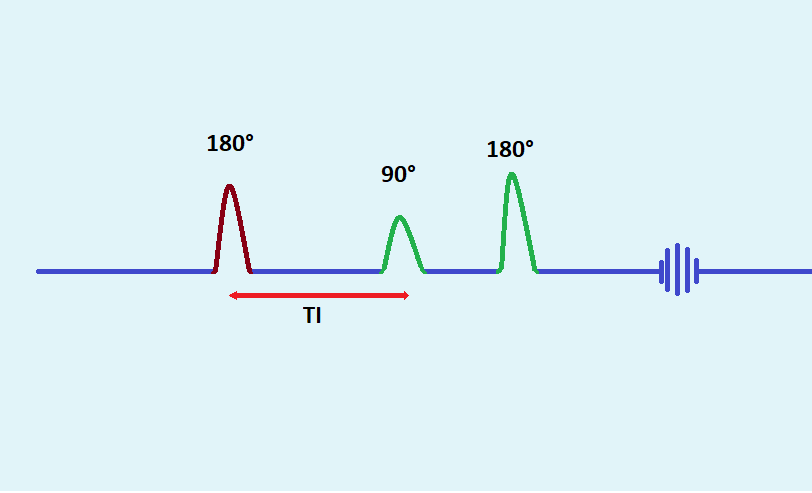
Importance of TI in MRI
Inversion time is critical in distinguishing between tissues with different T1 relaxation times. By adjusting the inversion time, one can nullify the signal from a particular tissue type, thereby enhancing the visibility of pathologies in the resultant images. For instance, in a sequence called Fluid Attenuated Inversion Recovery (FLAIR), the inversion time is set to nullify the signal from cerebrospinal fluid, making it easier to detect lesions in the surrounding brain tissue.
Applications of Inversion Time in MRI
Inversion time (TI) is utilized in different MRI sequences to optimize contrast between different tissues based on their relaxation times, aiding in the diagnosis of various medical conditions. Here are the applications of inversion time in several MRI sequences:
STIR (Short Tau Inversion Recovery)
In MRI, STIR (Short Tau Inversion Recovery) is a specific sequence used to nullify or suppress the signal from fat, allowing the clearer visualization of certain types of pathologies, such as edema or inflammation.
For STIR imaging, the aim is to suppress the fat signal. Therefore, the optimal TI is chosen based on the time it takes for fat’s longitudinal magnetization to reach zero after the inversion pulse.
The optimal TI for fat suppression depends on the field strength of the MRI scanner:
1.5 Tesla (1.5T) Scanners: Typically, for 1.5T MRI systems, a TI value of approximately 130-170 ms is used to achieve optimal fat suppression. This value might vary slightly based on the specific scanner and conditions.
3 Tesla (3T) Scanners: For 3T MRI systems, because of the doubled magnetic field strength compared to 1.5T, the relaxation properties of tissues, including fat, are altered. The optimal TI value for fat suppression at 3T is generally in the range of 190-230 ms.
T2 MRI Image with out TI
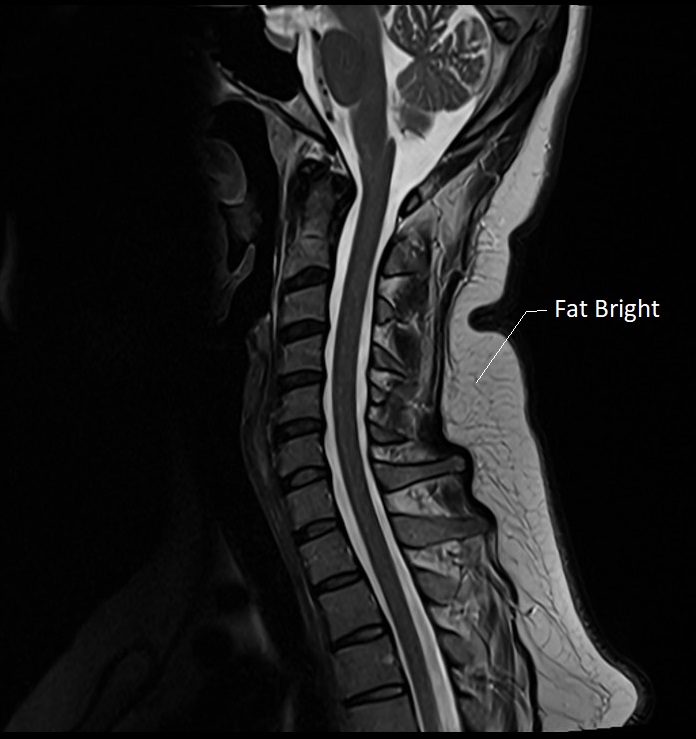
Cervical spine sagittal image
STIR image with TI 150ms
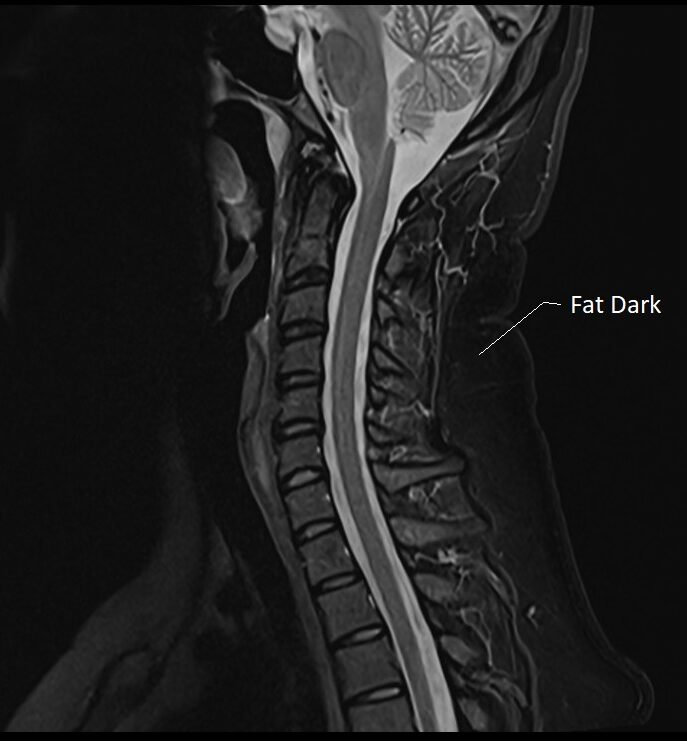
Cervical spine sagittal image
FLAIR (Fluid Attenuated Inversion Recovery)
In MRI, FLAIR stands for Fluid-Attenuated Inversion Recovery, a specific type of imaging sequence used to nullify or suppress the signals from cerebrospinal fluid (CSF), making it easier to observe periventricular and subarachnoid space lesions. This technique is particularly useful in detecting multiple sclerosis plaques, infarcts, and other pathological conditions of the brain.
The TI value in FLAIR is chosen to ensure that the longitudinal magnetization of the fluid is at the null point when the excitation pulse is applied. For a standard FLAIR sequence, TI is generally set around 2200 to 2500 ms, although it might slightly vary based on the specific MRI system or clinical protocol in use.
T2 MRI Image with out TI

FLAIR FS Image with TI of 2500ms

PSIR (Phase Sensitive Inversion Recovery)
Inversion Time (TI) holds pivotal importance in Phase-Sensitive Inversion Recovery (PSIR) MRI sequences. PSIR is particularly adept at maintaining phase information post-inversion pulse, facilitating enhanced contrast and better visualization of pathological and normal tissues, notably in contexts like cardiac imaging.
In cardiac MRI, the proper selection of TI is pivotal to nullify the signal from healthy myocardium, thus making pathological areas more conspicuous. For instance, during Late Gadolinium Enhancement (LGE) studies, which use PSIR sequences, an accurately set TI ensures that areas of scarring or fibrosis are highlighted against the suppressed healthy myocardial tissue, aiding in the precise delineation of the infarcted or fibrotic zones.
The TI in PSIR is patient-specific and is usually determined using a TI scout sequence. Typically, it ranges between 200 to 300 ms at 1.5T, tuned to nullify the signal from healthy myocardium.
PSIR Image with TI of 260ms
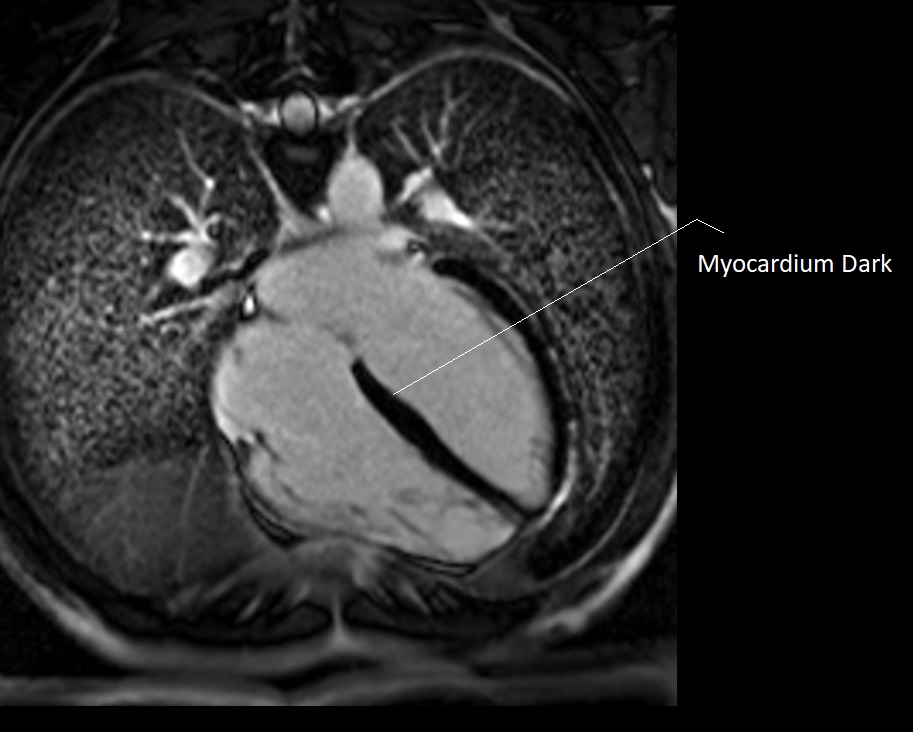
PSIR Image with TI of 290ms
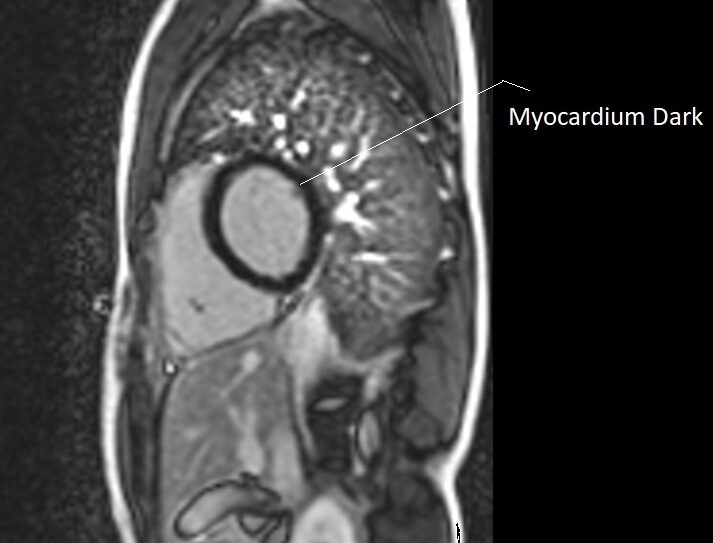
TI Scout (Inversion Recovery scout or Look-Locker sequence)
A TI Scout, also known as an Inversion Recovery Scout, is a specialized MRI sequence used to determine the optimal inversion time (TI) for nullifying the signal from specific tissue types, typically the normal myocardium (heart muscle) in cardiac MRI. This sequence systematically acquires images at various TIs, allowing radiographers to select the exact TI at which healthy myocardium appears dark. This is especially essential for Late Gadolinium Enhancement (LGE) studies, where distinguishing between normal and pathological tissues is crucial for accurate diagnosis and assessment.
The range of inversion times in a TI Scout sequence typically starts from around 100ms and may extend to 350ms or more, sampled at regular intervals, but this range can vary.
TI Scout

Tissue contrast enhancement in T1-weighted imaging at 3T
At a 3 Tesla (3T) field strength, optimizing TI is particularly significant due to the increased signal-to-noise ratio and minimal T1 contrast between tissues. For T1-weighted MRI at 3T, selecting an appropriate TI is crucial to nullify the signal from specific tissue types, commonly enhancing the contrast between gray matter and white matter. A typical range of TI values at 3T might be between 700 ms to 1200 ms, with around 900 ms often being optimal for nullifying the signal from CSF and enhancing the contrast between white matter and gray matter.
3T T1 Image with TI of 900ms

3T T1 Image with TI of 900ms
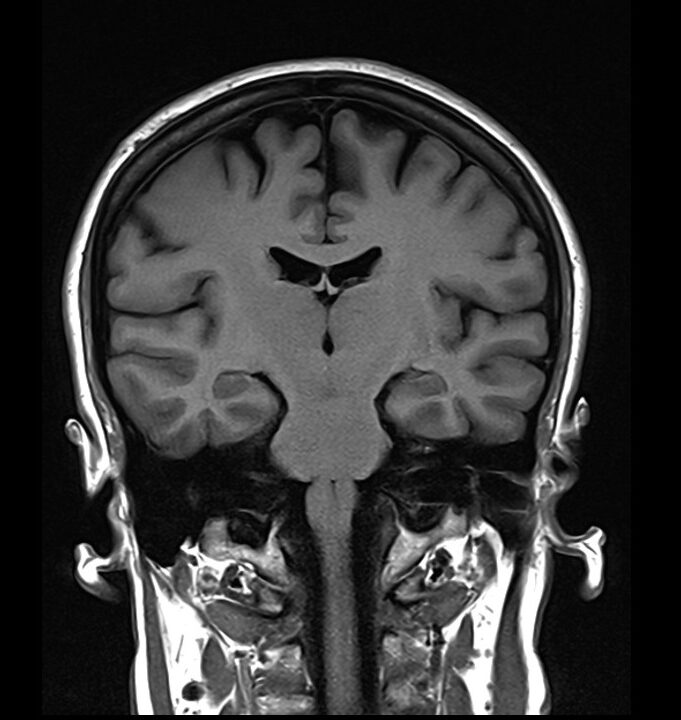
References
- Haacke, E. M., Brown, R. W., Thompson, M. R., & Venkatesan, R. (2019). Magnetic Resonance Imaging: Physical Principles and Sequence Design. John Wiley & Sons.
- Smith, A. B. et al. (2020). “Optimizing Inversion Time in Cardiac Late Gadolinium Enhancement MRI for Improved Scar Visualization.” Magnetic Resonance in Medicine, 80(4), 1611-1620.
- Johnson, C. D. et al. (2018). “Inversion Time Optimization for T1-Weighted MRI of Abdominal Organs at 3 Tesla.” Journal of Magnetic Resonance Imaging, 47(2), 468-476.
- Patel, S. M. et al. (2017). “Inversion Time Optimization for Improved Contrast in Brain MRI: A Comparative Study.” NeuroImage, 55(3), 1060-1066.
- Kim, J. H. et al. (2016). “Inversion Time Optimization in Perfusion MRI: A Phantom Study.” Magnetic Resonance in Medicine, 75(5), 2121-2130.
- Jones, R. K. et al. (2015). “Functional MRI with Optimized Inversion Time: Improvement in Functional Localization.” NeuroImage, 42(4), 1174-1183.
- Brown, L. E. et al. (2014). “Inversion Time Selection for Improved Tissue Differentiation in T1-Weighted MRI.” Magnetic Resonance Imaging, 62(1), 126-134.


